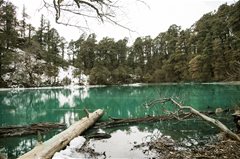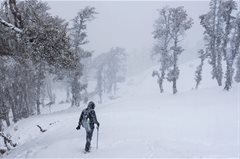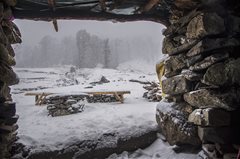Brahmatal Trek
The Best Beginners' Trek in Uttarakhand
Available Batches



Brief Description
Brief Itinerary
Detailed Itinerary
Day 1
Arrive at Lohajung (2331 M)
Distance: 294 kms (Dehradun to Lohajung)
Duration: 11-12 hours
We begin our journey to Lohajung from ISBT Dehradun latest by 7 AM. It is located at a distance of 294 km from Dehradun and would take about 11-12 hours to cover. The landscapes throughout this drive are striking.
The journey begins with a drive uphill that will take you through the Kumaon region into the Himalayan Belt of Garhwal. The roads here are extensive and the Shivalik ranges can be spotted at the horizon. The setting is tranquil and the Ganga river accompanies you swiftly throughout this stretch.
It gets exciting after this. We will be passing through three of the five iconic confluences of the Alaknanda river (Devprayag, Rudraprayag and Karnaprayag) on the way to Lohajung.
A beautiful showcase of tradition, Devprayag, is the first confluence we will be passing by. It is the converging point of the Bhagirathi and Alaknanda rivers. You can clearly see the turquoise of one merging with the teal of the other in the valley below.
40 kms from this point, we reach the historic town of Srinagar on the banks of Alaknanda. The Rudraprayag lies further ahead from here. It is the confluence of the Mandakini and Alaknanda rivers.
About 33 km from Rudraprayag is the third confluence of Karnapraya, the meeting point of the Alaknanda and the Pindari River. Each confluence is unique in its setting and is a delight to behold!
Lohajung, located in the Chamoli district of the Garhwal Himalayas, is 86 km from Karnaprayag. Expect to reach Lohajung by late evening around 8-9pm.
Day 2
Lohajung (2331 M) to Gujreni/Lower Bekaltal (2750 M)
Distance: 6 kms
Duration: 4-5 hours
We begin from Lohajung at 9 AM. Packed lunches will be provided for the day. The trek starts on a well-paved stone trail that heads into the forest. The Nanda Ghunti Peak can be spotted right from the beginning of the trek.
After a short walk through the woods, you will come across Mandoli village tucked in to the colossal mountain ranges on your left. The trail ascends gradually in long, serpentine curves from here. Higher up, you will be able to spot the Kali Valley which is the confluence of the Kali and Pindari rivers.
Beyond this point, the trail mostly runs through dense forests of conifer, Cedar, Oak and Fir allowing little sunlight in. There are also Rhododendrons in this region. They bloom during late winter and early spring season and cover the trail in pretty colors of orange and red. During the winter months, these paths are covered with pristine white snow and no flower blossoms.
The next landmark from here is a 10 m wooden bridge running over a stream where you can refill your bottles. Crossing the bridge, you will reach Begum that makes for an excellent resting point overlooking the expansive Navali and Bagdi Bugyals.
At a 20 minute hike from here, you will come across two streams. The second stream which is the Gujreni stream will eventually lead you to a beautiful clearing set in the backdrop of lush forests. This is the campsite for the day.
This region carries a woody scent and is surrounded by umber-brown Oak and Rhododendron forests. After setting up the camps, try spotting some of the birds around like Himalayan Woodpecker, Asian Barred Owlet and Blue-fronted Redstart amongst others. You will encounter snow from late December till Early March at this campsite dropping the temperature considerably.
Rejoice in the seclusion and silence of the campsite for it offers an opportunity to look inwards as much as outwards.
Day 3
Trek from Gujreni/Lower Bekaltal (2750 m) to Brahmatal (3400 M)
Distance: 5 kms
Duration: 4-5 hours
The trail from the Gujreni Campsite enters a thicket of forests with a moderate ascent throughout. You will catch the first glimpse of Mt. Trishul through the towering trees here. At a 2 hour hike away, lays the Bekaltal lake lined with Oak trees all around.
The color of the water is mud-brown indicating a high amount of dissolved organic matter. During the peak winter months, the lake is likely to be frozen. You can spend some time here immersing in the profound silence of this setting.
The trail dives straight into dense Oak and Rhododendron forests with a steep incline for the next hour. As you walk higher, you will see an idyllic view of the Bekaltal Lake retreating slowly below. The canopy of the forests is almost impenetrable, keeping most of the sunlight out. This allows patches of snow to sustain on the trails even in early spring season.
After an hour or so, the forest opens up to a spectacular meadow, called Talindi Top which offers some phenomenal views of Mt. Trishul and Mt. Nanda Ghunti. 1 km from here is the Jhandi top that sets a stunning vantage point surpassing the views offered earlier at Talindi Top. With the skies wide open and several layers of jewel-blue mountains decked one over the other, the spectacle is absolutely surreal to behold.
Jhandi Top marks the highest point on the ridge. The trail begins to descend beyond this point. The Brahmatal campsite is only 1.5 km of a downhill trek on the ridge from here.
After you reach the campsite, you can visit the Brahmatal Lake which is only 500m from the campsite. The Brahmatal lake is believed to be the place where Lord Brahma meditated long ago. This lake is completely frozen during winter season and is a marvel to behold.
One can go out and explore the beautiful photography options available at this place. Be prepared for subzero temperatures that could fall even below -7 degree Celsius during peak winter nights.
Day 4
Brahmatal (3400 M) to Brahmatal Top (3846 M) to Brahmatal
Distance: 6 kms
Duration: 4 hours
The trek starts early around 6AM after having a light breakfast at the campsite. This day of the trek is the most fascinating visually and the terrain is relatively easy to negotiate. There is also the added advantage of leaving the backpacks behind at the campsite since we will be returning here for the night.
During the winter season, your trek leader will provide you with microspikes and gaiters depending upon the snow conditions.
20 minutes into the trek, you will come across the Brahmatal lake tucked into the middle of a lush clearing. The trail till the Brahmatal lake is a steep incline climbing steadily through open grasslands. In the winter season, this area is usually covered in a sheath of white snow making it no less than a Winter Wonderland while the lake glistens under the morning sunshine.
Beyond the lake, the trail ascends moderately and envelopes into a ridge. You will notice the Brahmatal lake retiring in the valley below as you steadily gain altitude. The first ridge is a stretch of gentle ascent that leads you to the final ridge climb.
The final ridge eventually opens up tp a breath-taking spectacle of snow-capped mountain ranges standing so close to you that you feel like you are watching them on a theatre screen. Try spotting Mt. Trishul, Mt. Nanda Ghunti, Mt. Chaukhamba, Mt. Neelkanth, Mt. Kamet and Mt. Hathi Ghoda amongst the ranges.
Although Mt. Trishul and Mt. Nanda Ghunti accompany you throughout the trek, the close-up view from the summit is still thrilling to behold. Spend some time at the top immersing in the experience before heading back to the campsite.
Day 5
Brahmatal (3400 M) to Lohajung (2331 M)
Distance: 11 kms
Duration: 7-8 hours
After having a scrumptious breakfast, we begin the descent back to Lohajung at 8 AM following the same route as the ascent. Be prepared for a long day of trekking.
The trail runs through thick Oak and Rhododendron forests. Eventually, you will come across little Shepherds huts which the locals use to keep their livestock. Following the man-made stone trail beyond that point, you will be descending to the mountain villages leading to Lohajung.
Expect to reach Lohajung in about 7-8 hours. You can then explore the slow and peaceful life at the village and learn about the various legends around the area. Do not miss the sunset in the evening. The orange rays brushing the Mt. Nanda Ghunti peak gently is lovely to watch. This is followed by a piping hot dinner at the guest house.
Day 6
Departure from Lohajung (2331 M)
Distance: 294 kms
Duration: 11-12 hours
After morning tea, we will be starting for Dehradun early at 6-7 AM. The journey will once again take you through the three confluences of Karnaprayag, Rudraprayag and Devprayag. Expect to reach ISBT Dehradun by 6-7 PM.
In case, you plan on traveling back to Delhi the same night, consider booking a bus that starts at around 10-12 PM to account for any delays we might encounter on the way.
What's Included
- Meals as per menu on the trek.
- Forest Permits/Camping Charges , if any (Upto the amount charged for Indian nationals)
- Tents, Sleeping bags, mats
- Technical equipment ,Safety Equipment.
- Trek guide, cook, helpers, porters & mules for carrying common luggage.
- Services of a certified mountaineer as trek Leader.
- 2 Nights Hotel stay in Lohajung.
What's Not Included
- Meals during road Journeys.
- Any expense of personal nature.
- Any expense not specified in the inclusion list.
- Transportation from Haldwani to Lohajung and back to Haldwani.
Are you Eligible for this Adventure?
Brahmatal is one of the easiest treks of the Himalayas. With minimum ascents and a reasonable altitude gain, it is perfect for beginners.
BRS Level Required
With minimum ascents and a reasonable altitude gain, it is an ideal winter trek for beginners. Although Brahmatal is an easy trek, you will need good lung capacity and leg strength to reach the summit safely and back.
If you do not know what level of BRS trek would suit you best, worry not! Fill out this Form:
we will send you a progression chart to help you comfortably get out of your comfort zone in order to level up and ultimately reach your highest potential in the big, bad world of outdoor adventure.
Packing List
This is a list of essential items for individuals doing the trek with Bikat Adventures. This list contains only those items which the participants are required to bring with them. The list excludes those items which are provided by Bikat Adventures on the trek. We have divided the items into five categories. All the items in the list are essential except for those marked as optional.
Trekking Gear
- Ruck sack bag with rain cover. Qty -1
- Day Pack Bag - Recommended for treks with summit day
- Head Torch with spare Batteries. Qty -1
- U V protection sunglasses. Qty -1 Here is how you can choose the best sunglasses for trekking.
- Water Bottles: 2 bottles of 1 liter each
Footwear
- Non-skid, deep treaded, high-ankle trekking shoes Qty -1
- Pair of light weight Slipper/Sandals Qty -1
Clothing
- Quick Dry Warm lower or Track Pants. Qty - 2
- Full sleeves T-shirts/ Sweatshirts. 1 for every 2 days of trekking
- Pair of thick woolen socks. 1 pair for every two days of trekking
- Thermal Body warmer Upper & Lower. Qty-1
- Undergarments. Qty - 1 for every day of trekking
- Warm jacket closed at wrist & neck .Qty-1
- Full sleeves sweater. Qty -1
- Rain wear ( Jacket & Pants ) . Qty-1
- Pair of waterproof, warm gloves. Qty-1
- Woolen cap. Qty-1
- Sun shielding Hat. Qty -1
Toiletries
- Personal toiletries kit (Small Towel, Toilet paper, paper soap, Bar soap, toothbrush, toothpaste, cold cream, etc.)
- Sun screen lotion small pack. Qty -1 Here is your Sun Protection 101 to stay safe in the bright sunny outdoors.
- Lip Balm small pack. Qty-1
Utensils
- Small size, Light weight & Leak proof lunch box. Qty-1
- Plate. Qty- 1
- Spoon.Qty-1
- Tea/Coffee (plastic) Mug.Qty-1
Miscellaneous
- Camera (Optional)
- Carry your medicines in plenty in case you have any specific ailment. Consult your doctor before joining the trek.
- Dry fruits, Nuts, Chocolate bars (Optional)
Frequently Asked Questions
Why Bikat?
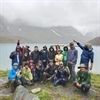

Small Group Size
Our batch sizes are capped at 15 for smaller treks with the trek leader and trekker ratio of 1:8. This ratio, in our years of experience, has proven to deliver the best trekking experience for individuals as well as groups. Capping the size of the group ensures individual attention to each trekker so that no signs of distress or need during the trek go unnoticed. It also helps to form a more cohesive cohort with better group energy which helps define the rhythm and pace of days on the trek. As you go higher up on the BRS scale, since the stakes are higher, expeditions have an even smaller group size with the ratio of expedition leader to climber set at 1:2.


Qualified Trek Leaders
We follow a rigorous regime of hiring and training our experts in the field. Each trek leader is a certified mountaineer with years of experience in the field. In addition to their qualification, they also go through practical and situational training to tackle any and all kinds of sudden conditions that may present themselves on the ground. Being unpredictable is the core nature of the mountains but being ready for any circumstance as best as possible is a controllable asset that we try to nurture. Our field experts are also trained in basic medicine and first-aid response. Watch: Forerunners - The Making of A Trek Leader At Bikat Adventures


Guided Progression
Since Bikat Adventures is a learning-based organization, we help you climb up the ladder of difficulty within the sphere of outdoor adventure systematically. Our on-ground training modules are designed to handhold you through the upskilling process so that you are ready to take on bigger challenges.


Equipment Quality and Check
All the gear used on our treks and expeditions is tried and tested, maintained for good quality, and is overall top-notch in quality and condition. We are continually looking to obtain the best of everything there is in the market so as to ensure optimum safety.


Support Systems
Along with the staff you see on-ground, we have a team of superheroes working in the background to give you the best experience possible. Our background team also comprises local staff from each area who know the region best. Having local support helps with studying the area, pre-planning, execution, and in receiving timely support in case of emergencies in these remote locations.


Communication
Our on-field staff is in constant contact with our teams based in primary locations so as to eliminate any avoidable delay in reaching additional help and support when required. We try to use the best tools for communication available, including satellite phones, in regions where they are not restricted.
What our customers Say
Cancellation Policy
Cash refund
Cancellations up to 60 days prior to departure date
Between 60 days upto 30 days prior to departure date
Between 30 days upto 10 days prior to departure date
Less than 10 days prior to departure date
Voucher refund
Cancellations up to 30 days prior to departure date
Between 30 days upto 15 days prior to departure date
Between 15 days upto 10 days prior to departure date
Less 10 days prior to departure date
- Cash refund is applicable only in case of bookings made without using any promotional offer code or Cancellation Vouchers or Discounts
- This is only a brief of cancellation terms. For finer details please refer Detailed Cancellation Policy.
Blog Posts

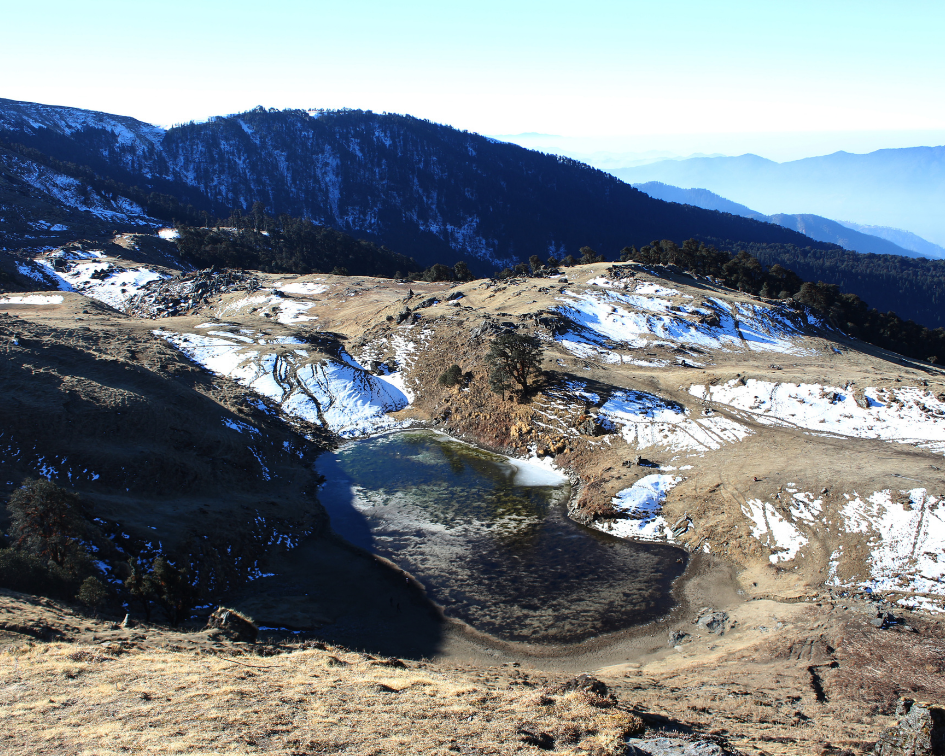

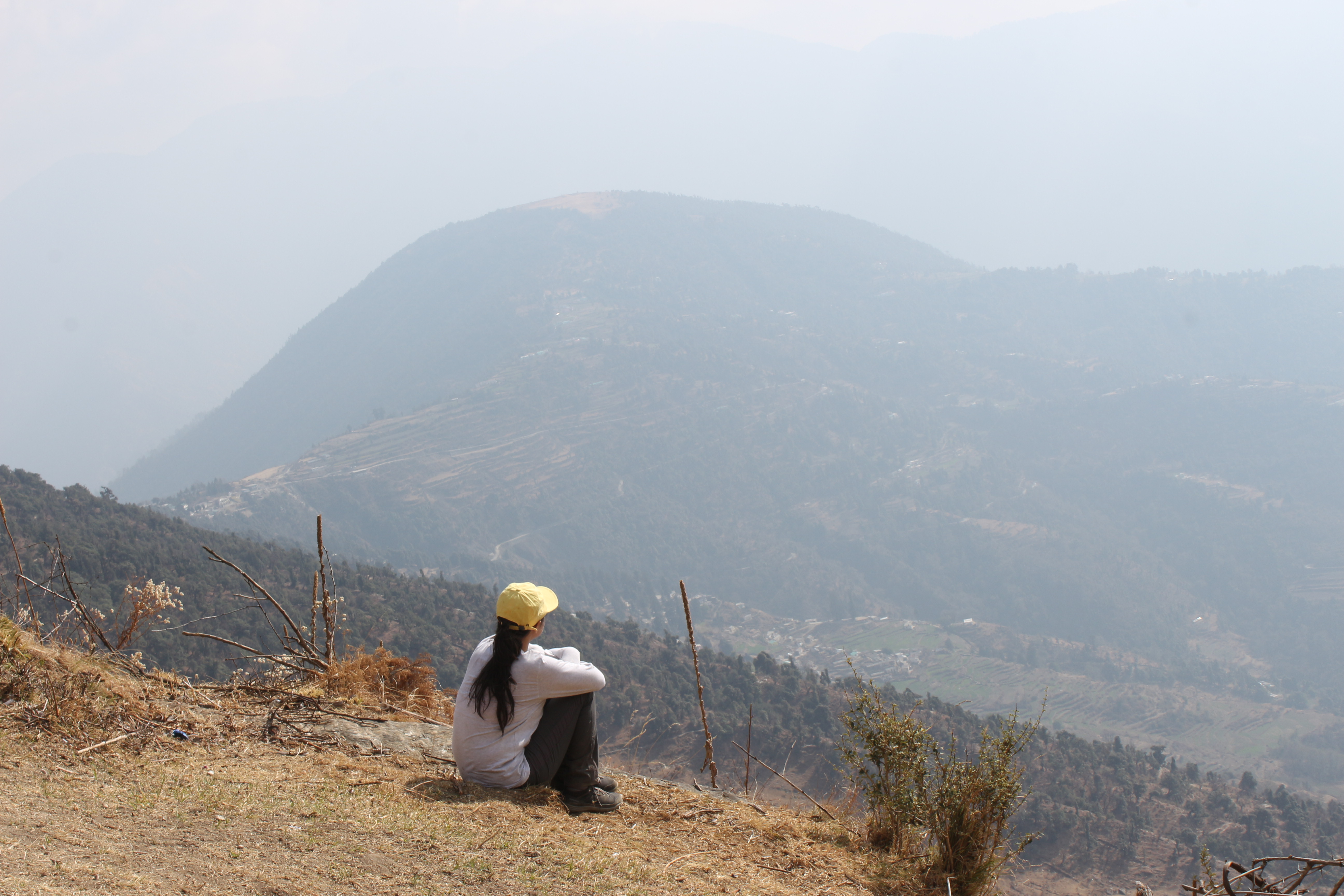


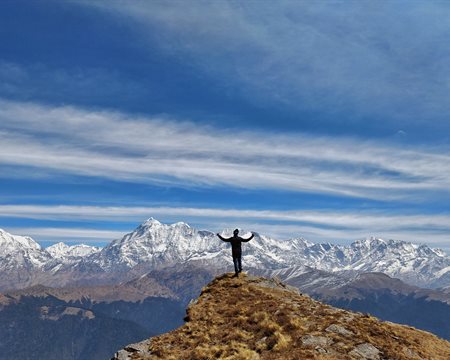

Similar Adventures

Kuari Pass Trek
The most scenic winter trek for beginners
Uttarakhand
5 Days
BRS 3
3876 m

Ali Bedni Bugyal Trek
The Next Chapter of Roopkund
Uttarakhand
6 Days
BRS 3
3535 m

Har ki Dun Trek
A Gorgeous River Valley Trek for Beginners
Uttarakhand
7 Days
BRS 3
3500 m



